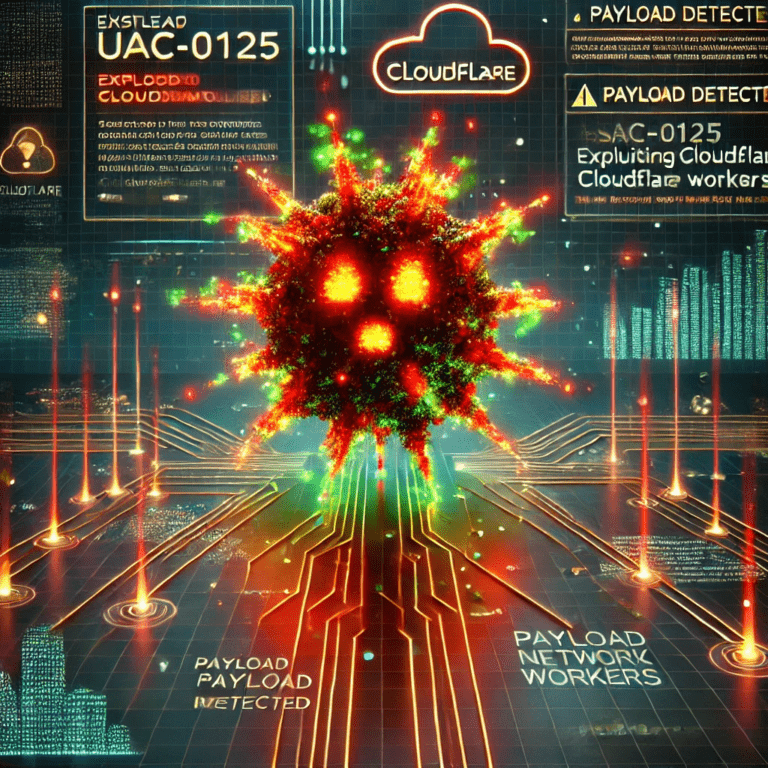US Federal Judiciary Tightens Cybersecurity After Sophisticated Attacks: What It Means for Courts, Lawyers, and Litigants
What happens when the documents that keep our justice system running become targets? When the system meant to protect confidential informants, minors, and sensitive filings comes under sustained cyberattack, it’s not just an IT problem—it’s a trust problem.
In the wake of “recent escalated cyber-attacks” against the federal judiciary’s case management system, the Administrative Office of the United States Courts (AOUSC) has rolled out stronger measures to protect sensitive court documents. Reports suggest the breach may have exposed sealed filings and potentially compromised the identities of confidential informants in multiple districts. That’s a seismic risk. And it’s a reminder that courts are now on the front lines of geopolitical and criminal cyber conflict.
If you work in law, government, journalism, or you’re a party to a federal case, here’s what’s changed, why it matters, and how to protect yourself and your clients.
The Short Version: What We Know So Far
- The AOUSC says the judiciary is tightening cybersecurity protections for sensitive court documents following sophisticated, persistent cyberattacks.
- A report by Politico suggests the federal case filing system was breached, with sources fearing exposure of confidential informants in multiple districts.
- Nation-state actors are suspected, according to those sources.
- Courts are implementing stricter procedures to control access to sensitive documents under monitored conditions.
- The judiciary is working with courts to mitigate the impact on affected litigants and filings.
For official judiciary updates, check the U.S. Courts news page: uscourts.gov/news.
What Happened, and Why It’s Different This Time
The judiciary’s announcement followed media reports of a significant intrusion targeting the federal electronic case management and filing environment. While most court documents are public by design, sealed filings contain sensitive material—identities of informants and witnesses, minors’ information, proprietary business data, and classified or law enforcement-sensitive details.
Here’s why that matters:
- Exposure of confidential informants can put lives at risk and compromise ongoing investigations.
- Targeted leaks can sway public perception and undermine trust in the courts.
- Sensitive filings can be weaponized for extortion or used by foreign adversaries for espionage.
In short, this isn’t just about data. It’s about integrity, safety, and the functioning of the justice system.
For reporting on the broader cyber threat landscape, see CISA’s ongoing advisories: cisa.gov/shields-up.
A Quick Primer: CM/ECF, PACER, and Sealed Documents
To understand the stakes, it helps to understand the systems:
- CM/ECF (Case Management/Electronic Case Files): The judiciary’s system that courts and legal professionals use to file and manage case documents. Courts run their own instances.
- PACER: The public portal for accessing federal filings. It’s tied to CM/ECF but is not the same system.
Most filings are public and accessible via PACER. But some materials are sealed and restricted to authorized parties. After a 2020 cyber incident that came to light in 2021–2022, the judiciary said certain highly sensitive documents would be handled outside the standard electronic system—in “stand-alone” secure environments—rather than uploaded to CM/ECF or PACER. See: Judiciary Addresses Cybersecurity Breach (2021).
The latest attacks suggest adversaries continue to probe and, in some cases, penetrate components of this ecosystem. That pressure is pushing more courts to adopt tighter handling of sensitive filings.
Why Courts Are a Prime Target for Cyberattacks
Courts are a treasure trove. They sit at the nexus of public interest, governmental authority, and sensitive information. Threat actors know this.
Common attackers and motives include:
- Nation-states: Espionage, intelligence collection, and sowing distrust in democratic institutions.
- Organized cybercriminals: Extortion, data theft, and resale of sensitive content.
- Hacktivists or ideologically motivated actors: Disruption, reputational damage, and influence operations.
- Case-specific adversaries: Individuals seeking to affect or surveil specific proceedings.
Think of the federal court system like a central switchboard for highly sensitive data. If you gain access, you can siphon off case files, map relationships, identify sources, or selectively leak materials. That’s potent leverage.
For context on these risks beyond the U.S., the International Criminal Court (ICC) has also reported targeted cyber incidents, underscoring the global nature of the threat. See ICC news: icc-cpi.int/news.
What “Tightened Security” Likely Means in Practice
The AOUSC noted more rigorous procedures to restrict access to sensitive documents under carefully controlled and monitored conditions. While specifics are often withheld for security reasons, the following measures are consistent with best practices for high-value systems:
- Access segmentation and “secure enclaves”
- Isolate highly sensitive filings from general systems.
-
Provide access only via monitored terminals or trusted, hardened workstations.
-
Strong identity verification
- Mandatory multi-factor authentication (MFA).
- Step-up verification for sensitive records.
-
Frequent session re-authentication.
-
Role-based, least-privilege access
- Limit who can see what—and for how long.
-
Time-bound access and explicit approvals for sealed materials.
-
Advanced monitoring and audit trails
- Continuous logging of every access and download.
-
Automated anomaly detection for unusual behavior.
-
Data loss prevention (DLP)
-
Controls that flag or block copying, printing, or exfiltrating sensitive materials.
-
Red-teaming and incident response readiness
- Regular adversary simulations and playbooks for rapid containment.
-
Clear escalation pathways to federal partners.
-
Vendor and supply-chain controls
- Tightened oversight of e-filing tools, plugins, and integrations.
- Contractual security requirements and continuous assessment.
The judiciary has signaled a shift in this direction since 2020. The current wave of attacks appears to be accelerating that timeline.
For technical frameworks, see NIST SP 800-53 for security controls: csrc.nist.gov/publications/detail/sp/800-53/rev-5/final.
What This Means for Key Stakeholders
For Litigants, Witnesses, and Informants
- Expect tighter identity checks and slower access to certain filings.
- Your counsel may request redactions or use alternative filing protocols for sensitive data.
- If your identity was protected by court order, ask your lawyer about extra safeguards and monitoring.
Practical steps: – Do not email sensitive personal data without encryption. – Use secure portals provided by your attorney or the court. – Consider credit monitoring and a credit freeze if personal identifiers may have been exposed. – Keep a record of who has your sensitive information and why. Ask for it to be minimized where possible.
For guidance on responding to potential identity exposure, review FBI resources: fbi.gov/scams-and-safety/ransomware.
For Attorneys and Law Firms
- Anticipate more stringent filing workflows for sealed or highly sensitive documents.
- Verify any changes to e-filing procedures with the court—not via email links, which can be spoofed.
- Enhance client communications around data handling. Be explicit about secure channels and timelines.
Immediate actions: – Enforce password managers and MFA firmwide. – Segment case files. Keep sealed materials in separate, access-controlled repositories. – Use client-side encryption for sensitive uploads, where compatible with court rules. – Update incident response plans to include judiciary-related notifications. – Train staff on phishing, consent-driven access, and “need-to-know” handling.
For legal practice cybersecurity, the ABA’s tech reports are a useful benchmark: americanbar.org/…/techreport/2022/cybersecurity.
For Journalists and the Public
- You may see delays in access to certain filings or increased redactions.
- Understand that transparency remains a core judicial value. But safety and integrity require balance.
- When reporting on leaked or suspect documents, verify provenance and be cautious about publishing PII.
For Court Administrators and IT Teams
- Continue the shift to zero trust, segmentation, and secure enclaves for high-sensitivity workflows.
- Harden privileged access. Rotate keys and credentials. Monitor for lateral movement.
- Double down on vendor risk management and logging visibility across systems.
CISA’s “Shields Up” remains a go-to resource for practical steps: cisa.gov/shields-up.
Security vs. Transparency: Finding the Balance
The judiciary exists to adjudicate disputes in public. Openness is not optional; it’s foundational. But openness has always coexisted with confidentiality where justice demands it.
Expect procedural changes such as: – Limiting digital access to sealed materials to vetted terminals or time-limited sessions. – Requiring in-person review for the most sensitive filings when feasible. – Delayed posting of certain filings to allow for security screening or redaction. – Stricter rules for attaching exhibits or data sets that contain PII, trade secrets, or protected identities.
Here’s the key: tighter controls on sealed filings do not diminish the courts’ commitment to transparency. They aim to protect the integrity of proceedings and the people involved.
For judiciary governance context, see the Judicial Conference overview: uscourts.gov/about-us/judicial-conference.
A Pattern of Rising Threats: A Quick Timeline
- 2020: A U.S. courts document system was compromised during a broader wave of attacks. The judiciary later confirmed a cybersecurity incident.
- January 2021: The judiciary detailed steps to address the breach and announced plans for handling highly sensitive documents outside standard systems. Source: U.S. Courts (2021).
- 2022: A member of Congress publicly described the 2020 compromise, underscoring its significance.
- September 2024: Judge Michael Y. Scudder, chair of the Judicial Conference’s IT committee, warned about rising threats from foreign adversaries seeking to erode trust in U.S. institutions.
- 2023–2025: The ICC disclosed targeted cyber incidents, highlighting a wider pattern against judicial bodies. See: icc-cpi.int/news.
- August 2025: The AOUSC announced tightened security after escalated cyberattacks and reports of a breach potentially affecting confidential informants.
Different incidents, same theme: judicial systems are now high-value targets in a prolonged, global cyber campaign.
Actionable Guidance: Reduce Risk Now
Even if you don’t run a court network, you can reduce exposure. Here’s a practical checklist.
For Courts and Government Legal Systems
- Implement zero trust architecture
- Continuous verification, micro-segmentation, and explicit trust boundaries.
- Harden authentication
- MFA everywhere, phishing-resistant tokens for admins and judges, conditional access.
- Privileged access management (PAM)
- Just-in-time privileges, session recording, and tight approvals.
- Network segmentation and isolation
- Isolate CM/ECF components and create secure enclaves for sealed filings.
- Endpoint detection and response (EDR) + SIEM
- Real-time detection, correlation, and automated containment.
- DLP and content governance
- Watermark access, control downloads, monitor print/screen capture attempts.
- Backup and recovery drills
- Immutable backups, ransomware playbooks, frequent tabletop exercises.
- Vendor risk management
- SBOMs, security attestations, continuous monitoring, least-privilege integrations.
- Staff training and red-team exercises
- Phishing, social engineering, and insider threat awareness.
Reference frameworks: NIST 800-53 and the NIST Privacy Framework: nist.gov/privacy-framework.
For Law Firms and Legal Departments
- Secure intake and client communication
- Use encrypted portals for sensitive exchanges. Avoid email for PII.
- Data minimization
- Collect only what you need, and delete it when you no longer need it.
- Redaction discipline
- Use professional tools; don’t rely on visual masking. Verify by extracting text.
- Device hygiene
- Full-disk encryption, automatic updates, and mobile device management.
- Cloud security posture
- Least privilege IAM policies, logging, and anomaly detection in legal SaaS tools.
- Third-party paper trail
- Keep a registry of who has access to sealed materials and why.
For Individuals Involved in Sensitive Cases
- Ask your attorney about data handling
- How will your information be shared with the court? What safeguards apply?
- Use strong, unique passwords and MFA
- A password manager can make this easy.
- Be wary of unsolicited messages
- Verify any “court” notice via official channels—not links in email or text.
- Consider credit protections
- Credit monitoring, fraud alerts, or freezes if PII exposure is suspected.
If you suspect you’re impacted by a breach, report it and follow federal guidance: cisa.gov/shields-up.
What to Watch Next
- Additional guidance from AOUSC
- Expect refined protocols for handling sealed filings and identity verification.
- Congressional oversight and funding
- Security upgrades require sustained investment and federal support.
- System modernization timelines
- Migration of high-sensitivity workflows to stand-alone or enclave systems will likely accelerate.
- Notifications and case-level remediation
- Courts may contact affected parties with next steps and protections.
- Spillover to state courts
- Threat actors often pivot. State and local courts should prepare now.
Key Takeaways
- The federal judiciary faces sophisticated, persistent cyber threats. Sensitive filings are a prime target.
- Tighter controls are coming, especially for sealed documents. Expect more verification and monitored access.
- The aim is to protect people and the integrity of proceedings without undermining transparency.
- Lawyers, litigants, and court staff can take concrete steps today to reduce risk.
- Stay informed via official channels and follow best-practice cybersecurity guidance.
For ongoing updates, bookmark the judiciary’s news page: uscourts.gov/news. For general cyber readiness, see CISA’s resources: cisa.gov/shields-up.
FAQ: Federal Judiciary Cybersecurity and Court Document Breaches
Q1) What exactly did the judiciary change? – The AOUSC says courts are implementing stricter, monitored access to sensitive documents and working to mitigate impacts on affected litigants. Specific technical controls aren’t fully public but likely include stronger identity checks, segmented access, and enhanced monitoring.
Q2) Were sealed records compromised? – Reports suggest some sensitive materials may have been exposed. Details are limited. If your case involves sealed filings, speak with your attorney about potential impacts and protective steps.
Q3) What’s the difference between CM/ECF and PACER? – CM/ECF is the filing and case management system courts and attorneys use. PACER is the public portal for accessing filings. They’re connected but not identical. Learn more: pacer.uscourts.gov.
Q4) How could informant identities be at risk? – Sealed filings can name confidential sources or include identifying details. If attackers accessed components handling sealed materials, those identities could be exposed. This risk is why courts are tightening controls.
Q5) Are nation-states behind the attack? – Sources cited by the press suspect nation-state involvement. The judiciary has described the attacks as sophisticated and persistent. Official attribution often takes time and may not be public.
Q6) Will public access to court records be reduced? – Public access remains fundamental. Expect delays or added verification for sensitive materials, not a blanket reduction in transparency.
Q7) I’m an attorney. What’s the most important step I can take now? – Enforce firmwide MFA and secure, segmented storage for sensitive case files. Verify any changes to e-filing procedures directly with the court. Train staff on phishing and handling sealed materials.
Q8) How do I know if my case was affected? – Courts typically notify affected parties if specific risks are identified. If you believe your sealed filings could be implicated, contact the clerk’s office and your counsel for guidance.
Q9) What frameworks should courts follow to improve security? – NIST SP 800-53 for security controls and the NIST Privacy Framework for data protection are widely recognized starting points: csrc.nist.gov/publications/detail/sp/800-53/rev-5/final, nist.gov/privacy-framework.
Q10) Could these breaches affect case outcomes? – They could impact witness safety, evidentiary handling, or timing. Judges can craft remedies, including protective orders, sealed hearings, or adjusted schedules, to preserve fairness and safety.
When courts strengthen cybersecurity, they’re protecting more than servers. They’re protecting people, the rule of law, and public trust. The threat is real, but so is the response. Stay cautious, stay verified, and keep using official channels as your source of truth.
Want more practical briefings like this? Subscribe to get future updates and expert breakdowns on law, cybersecurity, and public trust.
Discover more at InnoVirtuoso.com
I would love some feedback on my writing so if you have any, please don’t hesitate to leave a comment around here or in any platforms that is convenient for you.
For more on tech and other topics, explore InnoVirtuoso.com anytime. Subscribe to my newsletter and join our growing community—we’ll create something magical together. I promise, it’ll never be boring!
Stay updated with the latest news—subscribe to our newsletter today!
Thank you all—wishing you an amazing day ahead!
Read more related Articles at InnoVirtuoso
- How to Completely Turn Off Google AI on Your Android Phone
- The Best AI Jokes of the Month: February Edition
- Introducing SpoofDPI: Bypassing Deep Packet Inspection
- Getting Started with shadps4: Your Guide to the PlayStation 4 Emulator
- Sophos Pricing in 2025: A Guide to Intercept X Endpoint Protection
- The Essential Requirements for Augmented Reality: A Comprehensive Guide
- Harvard: A Legacy of Achievements and a Path Towards the Future
- Unlocking the Secrets of Prompt Engineering: 5 Must-Read Books That Will Revolutionize You







